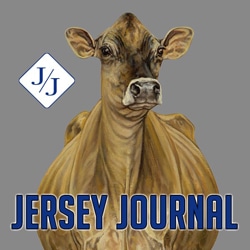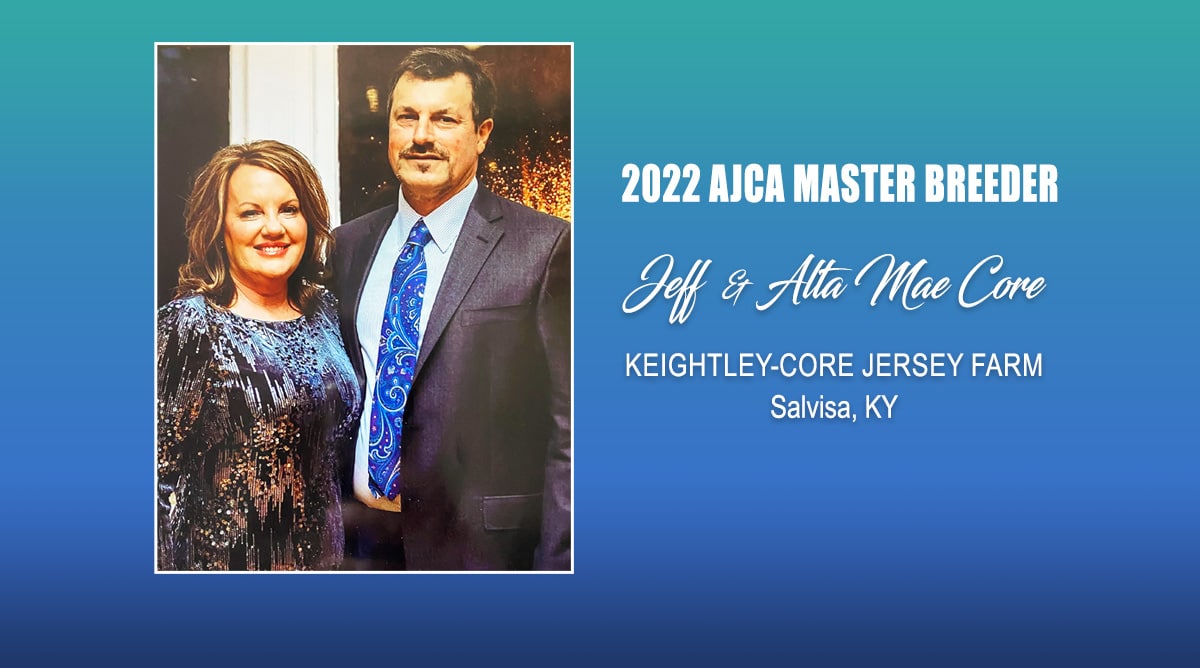Jer-Z-Boyz Ranch Shares Reproductive Success
Maintaining consistent, high pregnancy rates is no easy feat for even the most skillful producers. While there is no easy single formula to guarantee results on any given operation, different tips, tricks and technologies can help greatly improve the odds of getting more conceptions and healthy calves with each breeding.
Daniel de Graaf of Jer-Z-Boyz Ranch in Pixley, Calif., was among four panelists at the 2019 Western Dairy Management Conference held in Reno, Nev. Each was a herd manager who has received either platinum gold, silver or bronze Reproduction Awards by the Dairy Cattle Reproduction Council (DCRC). Corey Geiger, editor of Hoard’s Dairyman, moderated the discussion. De Graaf offered his Jersey-specific insights on maximizing the breed’s well-known reproductive efficiencies.
The de Graaf family, who was awarded platinum honors from the DCRC for maintaining a pregnancy rate over 40%, summarizes “Jerseys, cow comfort and a passion for doing everything right” as the key to a reproductively successful herd. In 1995 they made the switch from Holsteins to Jerseys. They now milk over 4,000 cows in their all Jersey herd. With multiple proven bulls in A.I., de Graaf cites their breeding philosophy as simple as “protecting what the Jersey cow is good at.”
“For us, that’s components, longevity and fertility,” said de Graaf. “Those are some of the key traits that we try to continue to build into our herd. We brought cows in from 11 different states in that core group back in 1995 and 1996. We had a pretty mixed bag of different genetics coming into our herd. Even with all that, we’ve tried to keep the Jersey cow what she is.”
All the dairies on the panel used different reproductive technologies to meet their needs and achieve the best rates possible. It takes a combination of digital and medical technologies to truly maximize efficiency and eliminate errors. Jer-Z-Boyz has been using embryo transfer and in-vitro fertilization technologies for years, something which de Graaf considers “a learning process.” He noted Jersey IVF embryos don’t respond to Ovsynch treatments the same way as Holstein embryos. This makes it especially difficult because all the industry standard data is based off black and white breed research. They’ve found their best results from trial and error with their own breed-specific work in both the lab and in the field. For example, they don’t use cows that are six days past their last heat for recipients. They’ve found that they need to be seven or eight instead. Experimenting with different culture mediums for growth and stimulation by the labs has also been helpful in procuring viable embryos.
One trait that’s played a big role in both sire and cow family selection is daughter pregnancy rate (DPR), de Graaf noted. They’ve found it correlates well to fertility and successful IVF transfers.
“We have done Jerseys on both ends of the bell curve as it relates to DPR,” he said. “The genetic/genomic predictions hold true when it comes to getting results on flush day.”
The use of sexed semen and beef semen was a common theme on all the dairies on the panel. As did his fellow panelists, de Graaf cited using sexed semen as the choice of first and second service for all heifers and certain cows followed by conventional. Beef semen added a lot of value to unwanted bull calves, especially for the large dairies. De Graaf said he breeds 30% of the herd Wagyu beef semen. This keeps their heifer inventory low which works best with their current business model. The overall goal is to create the most profitable calf possible, and that means avoiding pure Jersey bull calves who have very little market value. Long term, this makes the farm more profitable.
Management practices were really what tied everything together for all producers on the panel. Each discussed how they tie in their personalized management styles to complement their breeding philosophies and technologies. Jer-Z-Boyz uses DairyComp to keep their records. This keeps information at the fingertips of everyone involved with reproduction. It’s also a great system for identifying issues so they can be corrected in a timely manner.
For his Jersey herd, de Graaf works with the breed’s strong fertility traits to optimize on pregnancies. The farm practices strict breeding protocols for each age group of cows. For example, aged cows on their fifth lactation and greater can be bred beginning at 80 days in milk. Middle aged cows, on their third or fourth lactation, are bred at 70 days in milk and young first and second lactation animals are bred at 60 days. Cows who do not breed are then enrolled on Ovsynch. Besides the reproductive advantages, de Graaf notes they’ve seen a little more of a persistent lactation curve.
At the end of the day, the numbers at Jer-Z-Boyz dairy speaks for themselves. The heifer herd is in the high 40% range on first and second service sexed semen. That percentage goes up when conventional beef semen is used. Milk cows are in the mid to high 30% range on the first two services of sexed semen, also higher with conventional beef.
De Graaf notes his farm’s program is a lot of work to do correctly, but for success “there is never a good reason to cut corners.”




